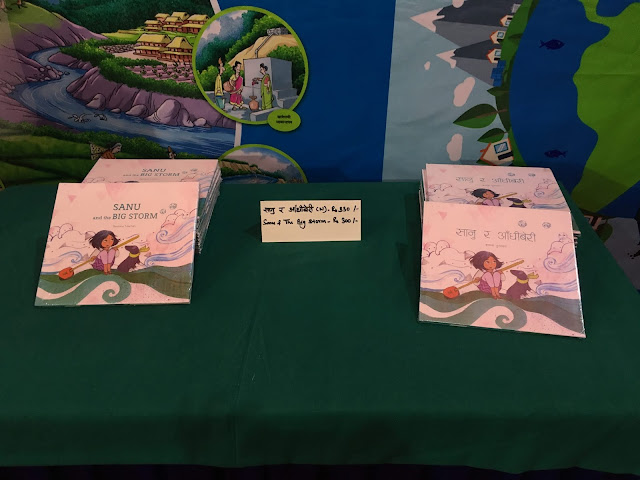Sanu and the Big Storm
"Dark clouds gather in the sky. There is a chill in the air and a storm is fast approaching. Sanu waits for Ama to return from fishing in the lake."
So begins the story of a young girl named Sanu, venturing out onto Fewa lake at the southern end of the Pokhara valley to look for her mother. She bravely endures mist, wind, rain, and hail all to make sure her mother returns home safe and well.
It's not only a story about the bond between mother and daughter, but also a story about the history of the region and its people, about the beauty even in nature's dangerous storms, and above all, about strong women.
In fact, the more time I spend in Nepal, the more I admire the women who not only do so much physical work, but also exude copious amounts of love for their children and others around them, not to mention the wonderful women that I am working with at Srijanalaya.
This past Saturday, Srijanalaya and Nritya Aagan performed Sanu and the Big Storm, written by Bandana Tulachan. The performance included music, dance, and narration. They performed twice at the national book fair in Kathmandu, in a space that was far too small for all of the children, parents, photographers, and all other spectators who came to watch.
 | |
|
In the end, it was wonderful, beautiful, and above all emotional. In fact, the first group of children to come watch the performance were blind or deaf, or had down syndrome. For this reason it was critical that the performance include strong visual as well as auditory elements, so that no one was missing out. Each layer (music, recitation, dancing, gestures, etc.) helped to tell the story of Sanu.
 |
| A wonderful group of kids-- and the space filled up even more! |
It's funny, because I didn't even understand most of the Nepali, and yet I could still follow what was going on (though, to be fair, I knew the story beforehand). Regardless, I'm learning more and more that a lot of communication happens not through words but through actions, motions, emotions, etc. Perhaps most of communication is in fact unspoken, which is something that is too easily forgotten. "Actions speak louder than words." Now more than ever do I understand what is meant by this saying.
Laugh, cry, smile: this is the kind of language that is universal and "spoken" by everyone. Being able to speak literal languages might get you somewhere, but you won't get far if you haven't mastered the unspoken ones.
Anyway, much love to all.
For a little preview of the performance, see below.




Beautiful. Body language is so powerful.
ReplyDelete